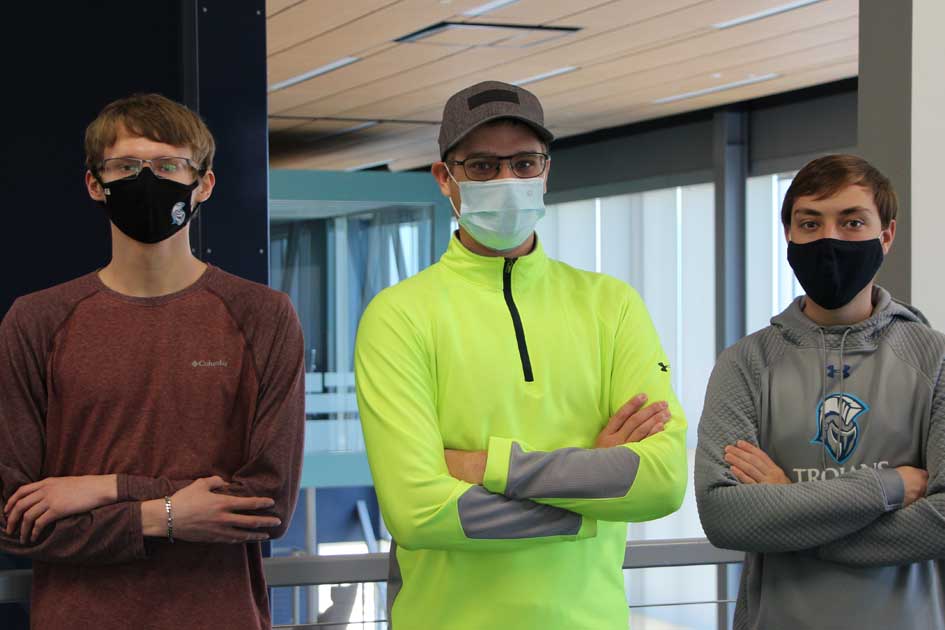DSU team takes 3rd in Sanford HealthHack
December 4, 2020

Three students have ventured into the realm of cyberhealth by participating in and taking 3rd place in the recent Sanford HealthHack.
Sponsored by Sanford Health Technology Solutions, the second annual HealthHack brought together best solutions in healthcare through ideas that included clinical expertise, technology prowess, and innovative spirit.
Ryan Morganti, Andrew Rotert, and Nick Sandison created an app to function as an early warning system and risk identifier, something that could be useful for busy parents, for example, to help decide if a doctor’s visit is necessary.
The mobile app they created used augmented reality to scan an affected area, which was then mapped into data points that artificial intelligence model analyzed. The app also included an option for non-scannable symptoms.
“The application is not a replacement for doctor’s visit,” Sandison stated, but displayed relevant information on possible issues, and recommended a course of action. It could also provide access to Sanford’s Location Finder to schedule an appointment and save the information to the patient’s document reference API, which the care provider could reference.
Sandison, a cyber operations major from Spirit Lake, Iowa, said they understood the importance of working with a health app, or anything having to do with health. “You have to be careful because you’re dealing with people’s lives.” Morganti, a computer science and mathematics double major from Fort Collins, Colo., agreed there is need for a high degree of integrity, especially with virtual care and remote visits.
This was one of 17 projects created over the two-week hack, with over 150 college students participating. A virtual doctor project created by two doctoral students from MIT took first place; second place went to an Augustana University team who created a health memo project.
Rotert, a computer science and mathematics double major from Sioux Falls, S.D., said the trio had to research and learn some new technology to build the app. “Integrating health and tech will be more research-based because you don’t know what outcomes are possible,” he said.
This combination of technology and healthcare gained new momentum when Dakota State and Sanford Health announced their CyberHealth Strategic Alliance on November 18.
The HealthHack presentations may be viewed at: https://sanfordhealthhack.devpost.com. The DSU team’s submission presentation starts at 42:30.
